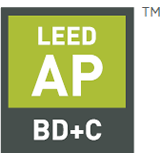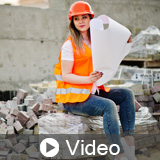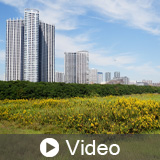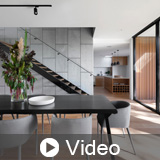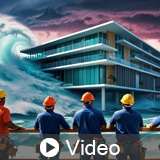In this course, we explore how Health Product Declarations (HPDs) contribute to the LEED v4.1 rating system. Our team discusses how design professionals can achieve the LEED v4.1 BD+C and ID+C Material Ingredients credit. In addition, we review the HPD Open Standard and discuss how it can influence design professionals t...
LEED Specific BD+C
48 Online Courses
|
|
Have you ever wondered about the untapped potential of esoteric design strategies in shaping the future of sustainable architecture? What design strategies are innovators, disruptors, and mavericks using to advance sustainable design? In this course we explore uncommon LEED v4.1 BD+C pilot credits and review how projects...
|
|
In this course, we describe how design professionals can achieve the LEED v4.1 BD+C and O+M Rainwater Management Credit. In addition, we discuss green infrastructure and low-impact development strategies and how they can help for project sites.
|
|
The impending climate crisis casts a looming shadow over our planet, and the responsibility to avert catastrophe falls upon us all. Design professionals can wield their creative powers to conceive sustainable, resilient, and regenerative solutions before it's too late. Diverting construction waste from landfills and prom...
|
|
In a world where climate change rages unchecked, the skies weep acid rain, monstrous storms destroy coastal cities, vibrant communities turn into desert wastelands, millions flee their homes, entire species go extinct, and ecosystems collapse. Renewable energy can play a vital role in addressing these challenges and miti...
|
|
Imagine this scenario: skyscrapers that breathe sustainability, neighborhoods that pulsate with community vibrancy, and cities that hum with innovation. This is the future we envision. Through a captivating blend of in-depth case studies, insightful analyses of proven practices, and visionary examination of cutting-edge...
|
|
In this course, we describe how design professionals can achieve the LEED v4.1 BD+C Sensitive Land Protection credit and reduce environmental impacts for building sites. We review sensitive land areas including wildlife habitat, wetlands, prime farmland, floodplains, and water bodies.
|
|
Noise can negatively affect human health and productivity in the workplace. Poor acoustic performance can critically affect learning in schools and impact healing at healthcare facilities. It is imperative that design professionals balance acoustical design strategies when planning systems and indoor spaces. In this pres...
|
|
In this course, we explain how to achieve the LEED v4.1 BD+C and ID+C MR: Sourcing of Raw Materials credit and how to specify environmentally friendly building materials. We review FSC certification, recycled content, and how bio-based materials could change the future of construction.
|
|
As severe weather events and rising sea levels threaten to reshape our coastlines and devastate communities, our team discusses cutting-edge strategies to create resilient, sustainable structures that can withstand nature's fury. We explore LEED v4.1's robust framework for climate-adaptive design, exploring innovative te...
|

